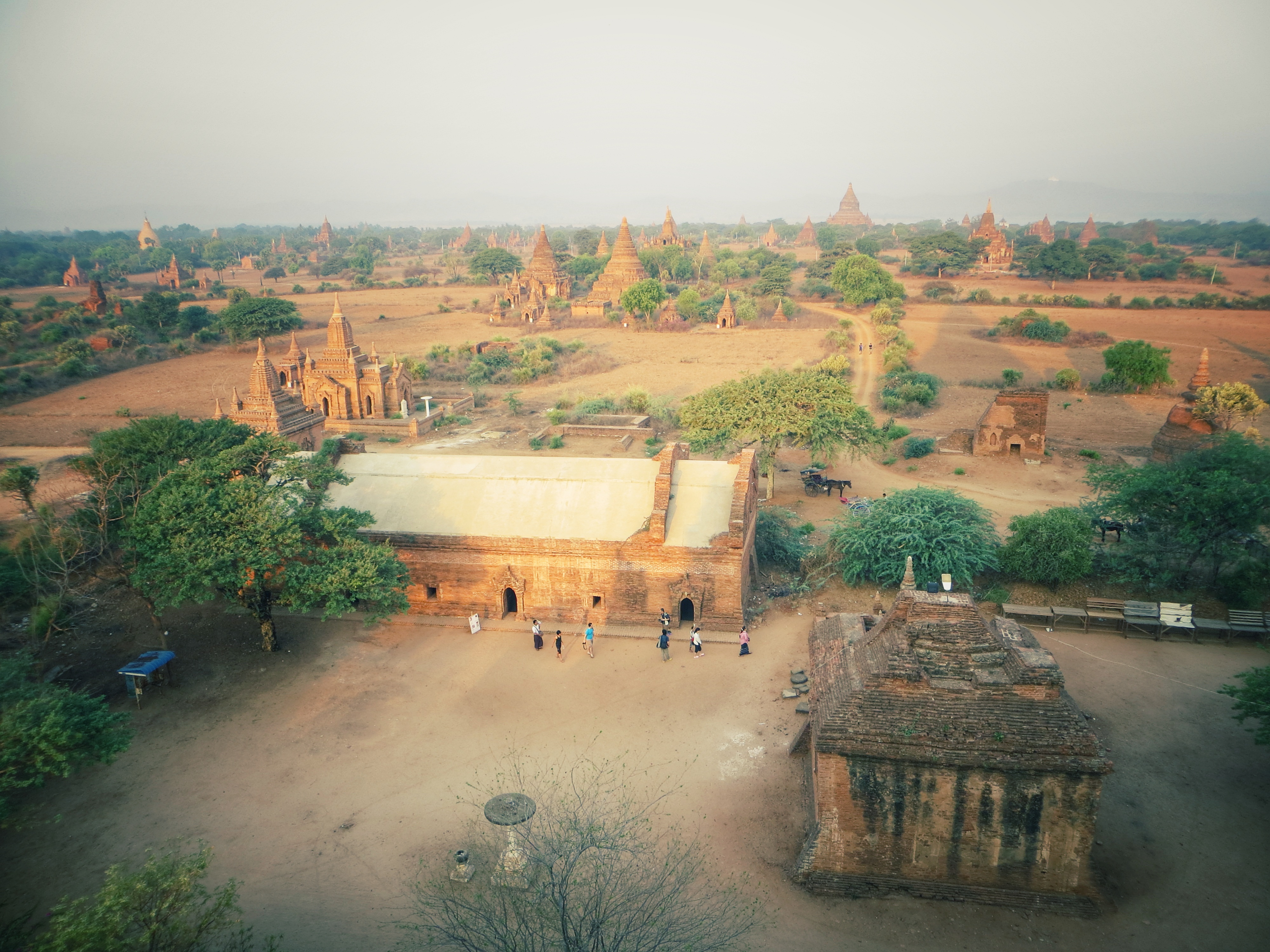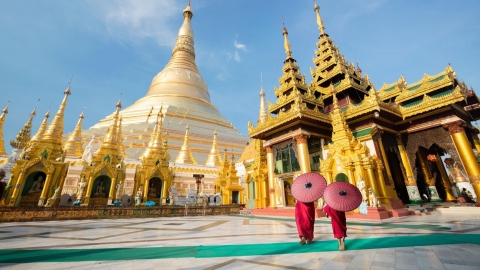At four in the morning, Bagan was still pitch black, so I quickly found a horse-drawn carriage for a tour of the temples from dawn to dusk. Bagan was once the capital of the ancient Pagan Kingdom with more than 14,000 terracotta temples. Through historical events and earthquakes, now only about 2,000 temples remain under the shade of the fragrant, broad-leafed Nim and Arabica trees.
BAGAN SUNRISE IS AS BEAUTIFUL AS A FAIRYLAND
Wishing to enjoy the beautiful sunrise moment in the fairyland of Bagan, I urged the horse driver to speed up to the Shwe-san-daw temple. Climbing the steep stone steps, I was exhausted before reaching the ideal position near the top of the tower. When I got there before dawn, I was surprised to see that a large number of tourists had already gathered. Each person found a good position facing east, preparing their cameras to "combat" the Bagan sunrise scene. It was very difficult for me to find a relatively good position next to other professional photographers.

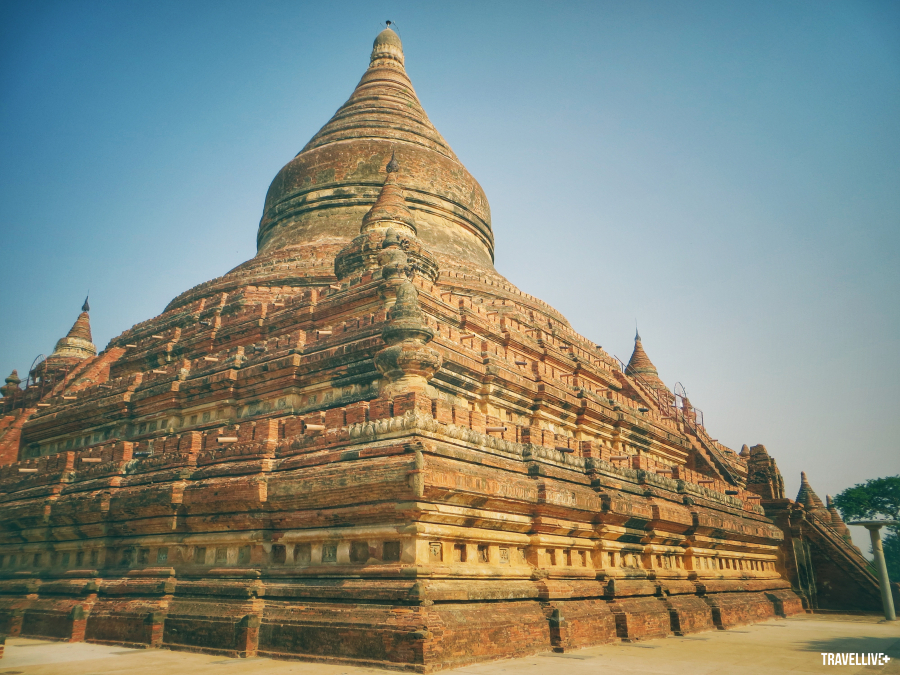
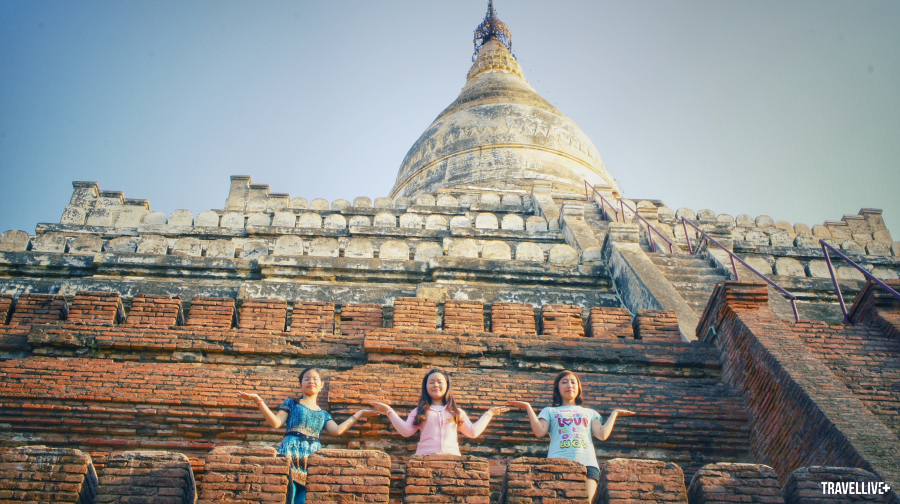
The first rays of light gradually appeared from the horizon at six o'clock in the morning. Bagan's sunrise was different from other places because it exuded a wild and magical beauty. The whole land of Bagan became hazy with thousands of large and small temples looming in the distance, an extremely impressive scene. A Japanese tourist used pen and paper to draw the sunrise, each tower, the treetops. Indeed, Bagan's sunrise was as beautiful as a fairyland!
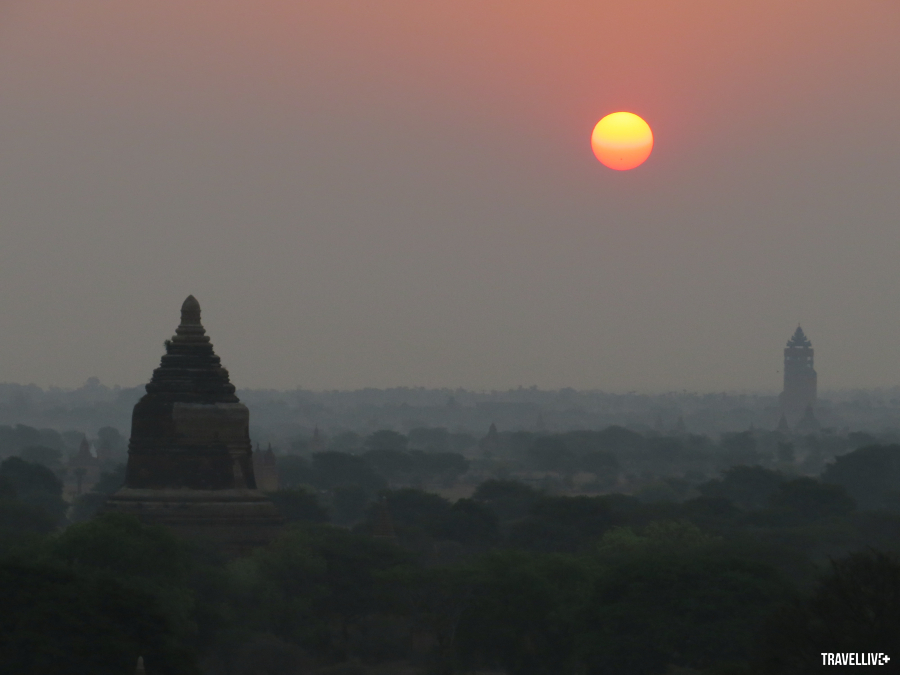
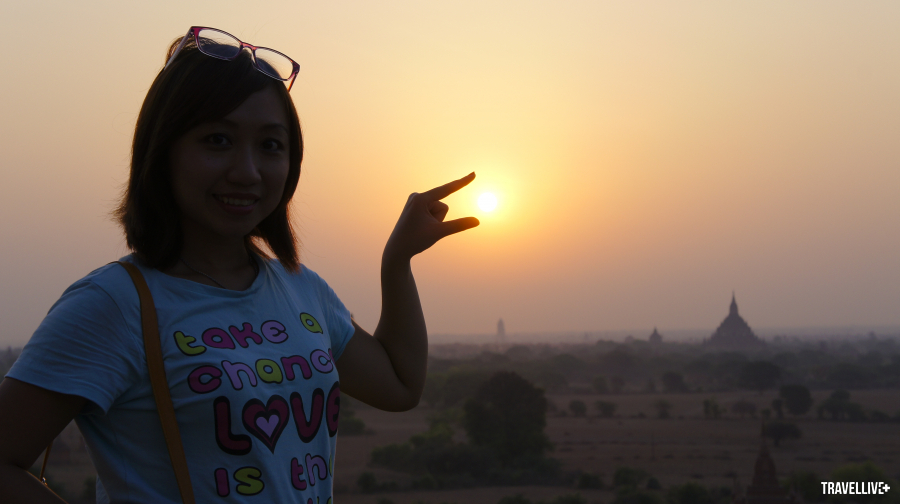
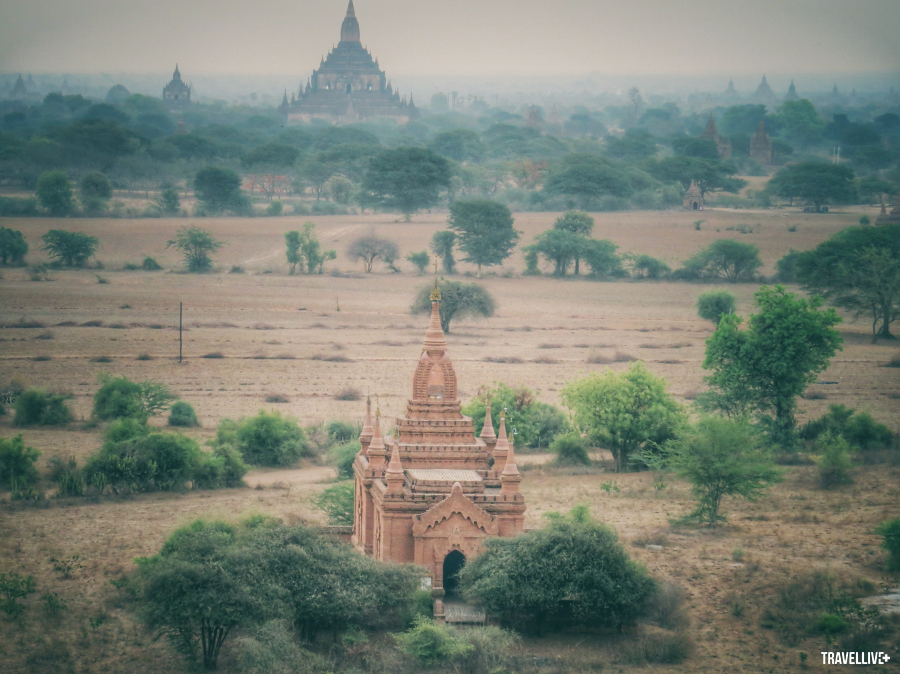
TERRAIN TEMPLES: THE UNIQUE HERITAGE OF BAGAN
The sun rose high, Bagan was filled with sunlight and blazing heat. To show respect before entering the main hall of the temples, people had to take off their shoes, sandals and socks. Under the scorching summer sun, the temples made of baked stone, the temple grounds several hundred meters long absorbed the blazing heat as if waiting to challenge the bare feet of Buddhists and tourists. However, that difficulty did not deter the travelers from far away because the beautiful scenery and the historical sediments of the temples stimulated my exploration as well as that of many other tourists.

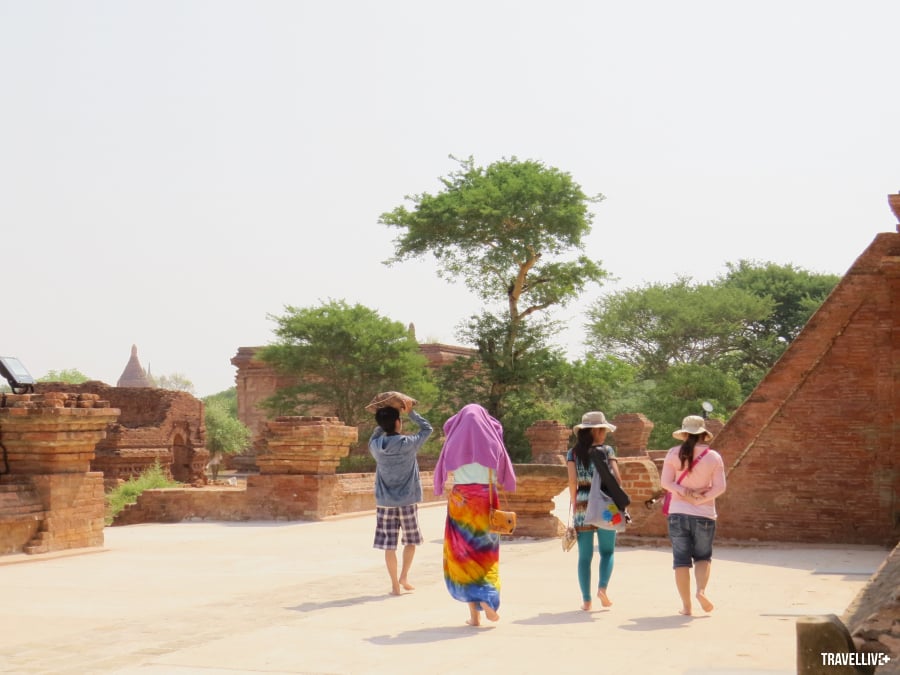

The sound of horse-drawn carriages clanking and clattering on the small, dusty paths brought me to a stop in front of the most famous stone temple in the area, Ananda. The stone temple is famous for its majestic architecture and giant Buddha statues. The temple is made of cool stone, built in 1105, representing the boundless supreme wisdom of Buddha, with a cross-shaped architecture, a cube in the center and standing Buddha statues on each side.
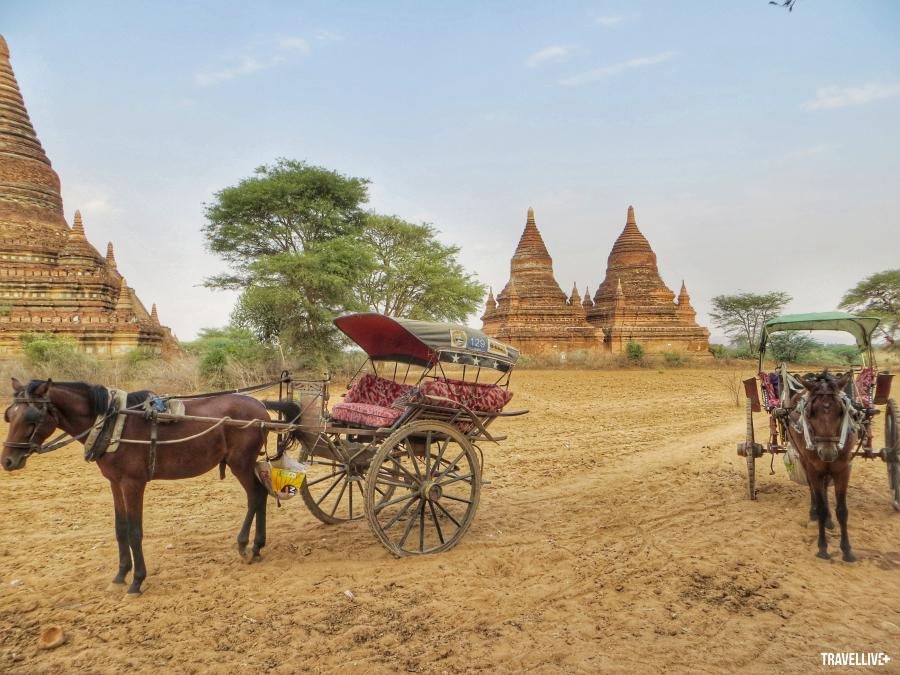
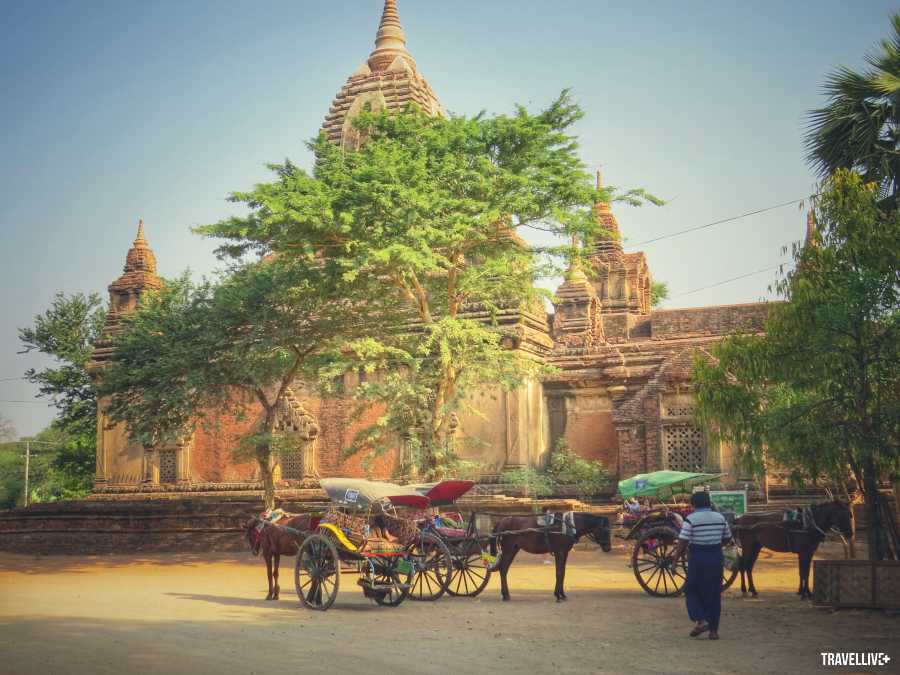
The outer walls are covered with mosaics of colored glazed tiles, illustrating scenes from the Jataka. On the four sides of the temple are four 6 meter tall wooden Buddha statues with different facial expressions. The Bagan people believe that the difference in the Buddha's facial expressions will make people aware of their actions when they come to this place and go out into the world.
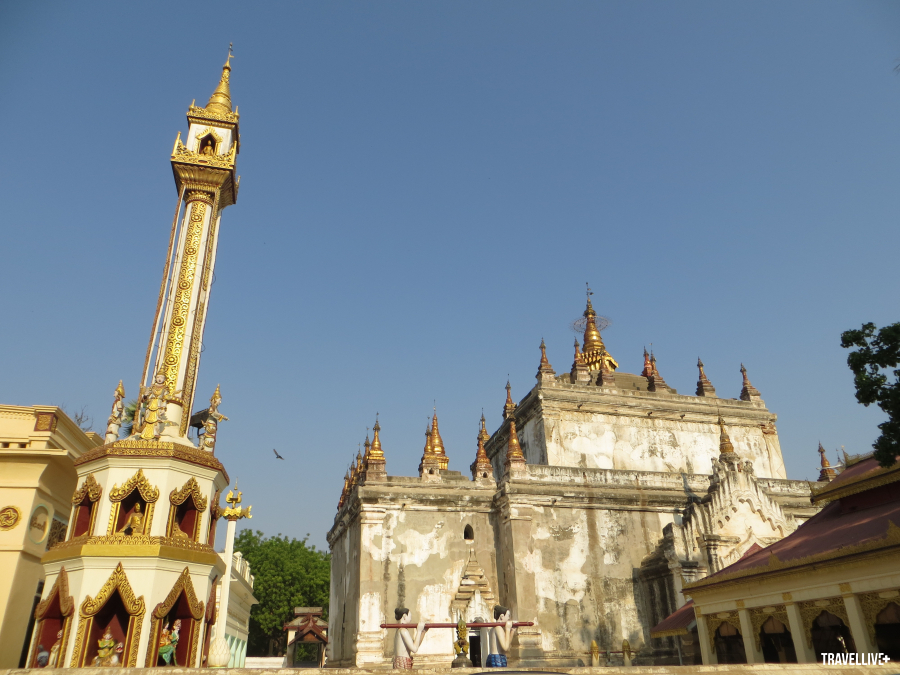
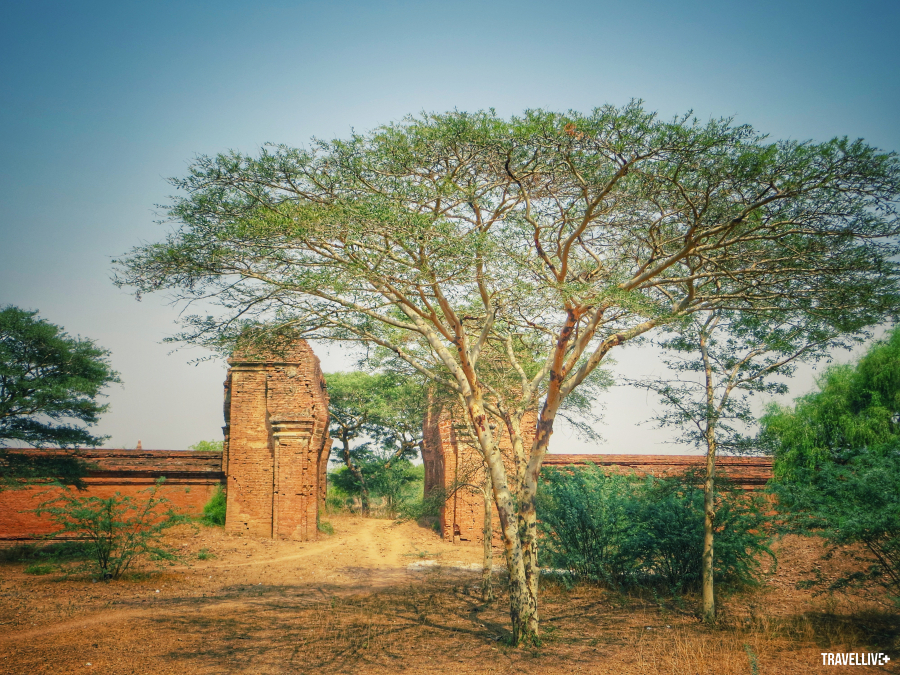
I asked the horse driver to take me to the famous Mahabodhi temple, whose name and architecture are very similar to the original Bodhigaya temple in India. This temple came into existence because the Bodhgaya temple in India was destroyed, and the Buddhist leaders of Bagan sent a group of artisans to help rebuild it. Then, when they returned to Myanmar, these artisans built a temple based on the original temple in India.
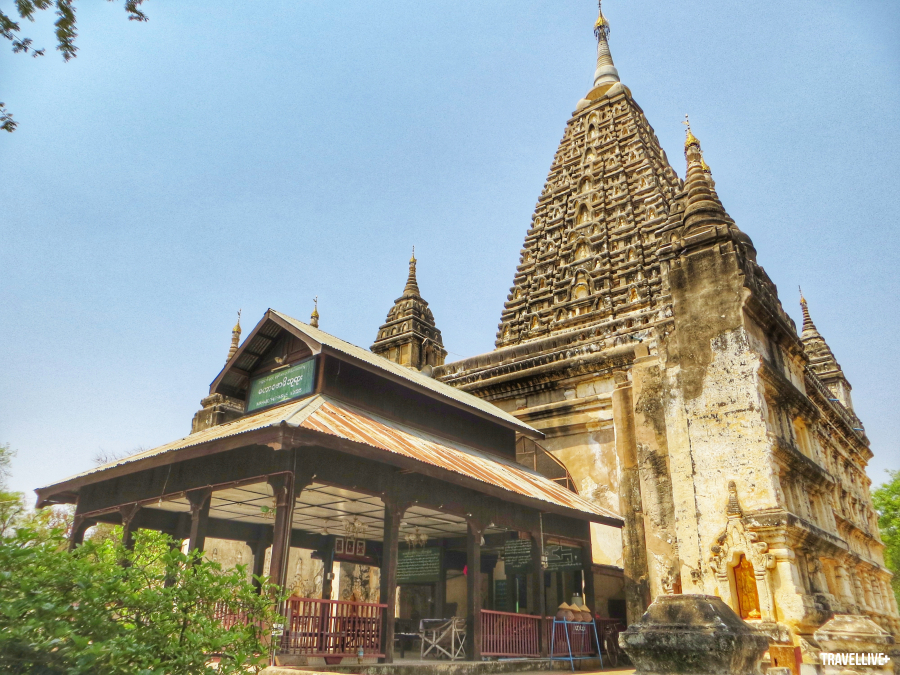
Mahabodhi has two floors, a base and a tower. The base has a large Buddha shrine, which is different from other temples in that it has a gilded door and is locked with a steel lock specially made for the Queen of England. Around the temple are many small niches, each with a Buddha statue, a total of 465 statues. The tower has four sides with hundreds of reliefs depicting the life of Buddha.
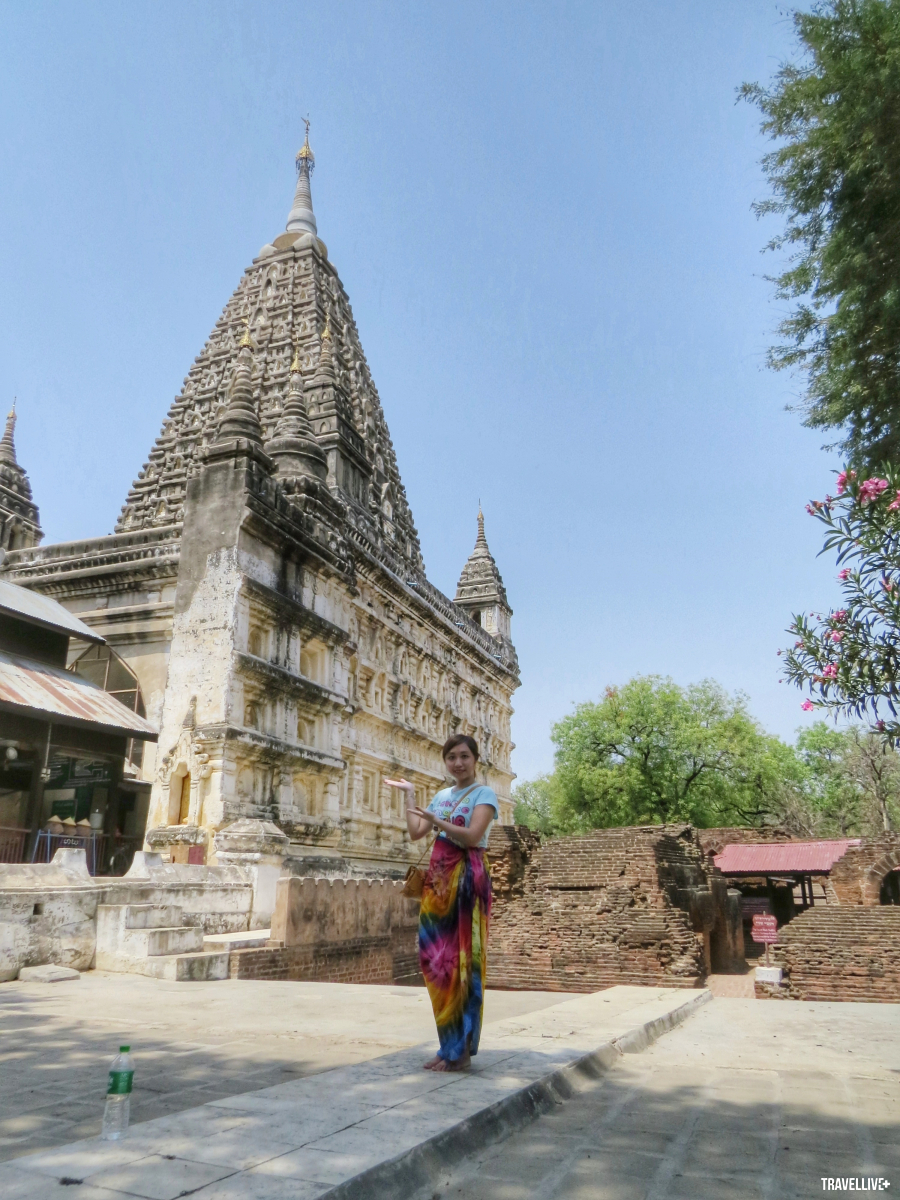
When the sunset covered all the roads and temples, it was time for me to leave Bagan. Closing the legendary land of Bagan to open new journeys to other places in Myanmar. Goodbye Bagan, see you again soon!






